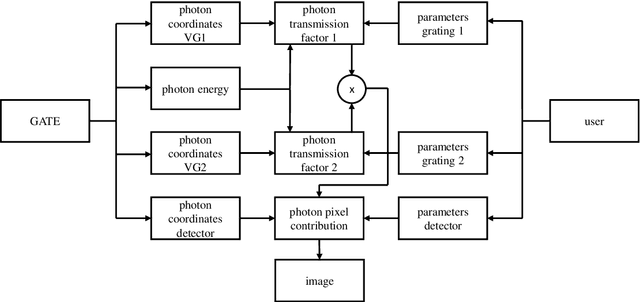Jan De Beenhouwer
imec-Vision Lab, University of Antwerp
MIRT: a simultaneous reconstruction and affine motion compensation technique for four dimensional computed tomography (4DCT)
Feb 07, 2024Abstract:In four-dimensional computed tomography (4DCT), 3D images of moving or deforming samples are reconstructed from a set of 2D projection images. Recent techniques for iterative motion-compensated reconstruction either necessitate a reference acquisition or alternate image reconstruction and motion estimation steps. In these methods, the motion estimation step involves the estimation of either complete deformation vector fields (DVFs) or a limited set of parameters corresponding to the affine motion, including rigid motion or scaling. The majority of these approaches rely on nested iterations, incurring significant computational expenses. Notably, despite the direct benefits of an analytical formulation and a substantial reduction in computational complexity, there has been no exploration into parameterizing DVFs for general affine motion in CT imaging. In this work, we propose the Motion-compensated Iterative Reconstruction Technique (MIRT)- an efficient iterative reconstruction scheme that combines image reconstruction and affine motion estimation in a single update step, based on the analytical gradients of the motion towards both the reconstruction and the affine motion parameters. When most of the state-of-the-art 4DCT methods have not attempted to be tested on real data, results from simulation and real experiments show that our method outperforms the state-of-the-art CT reconstruction with affine motion correction methods in computational feasibility and projection distance. In particular, this allows accurate reconstruction for a proper microscale diamond in the appearance of motion from the practically acquired projection radiographs, which leads to a novel application of 4DCT.
Voxel-wise classification for porosity investigation of additive manufactured parts with 3D unsupervised and (deeply) supervised neural networks
May 13, 2023



Abstract:Additive Manufacturing (AM) has emerged as a manufacturing process that allows the direct production of samples from digital models. To ensure that quality standards are met in all manufactured samples of a batch, X-ray computed tomography (X-CT) is often used combined with automated anomaly detection. For the latter, deep learning (DL) anomaly detection techniques are increasingly, as they can be trained to be robust to the material being analysed and resilient towards poor image quality. Unfortunately, most recent and popular DL models have been developed for 2D image processing, thereby disregarding valuable volumetric information. This study revisits recent supervised (UNet, UNet++, UNet 3+, MSS-UNet) and unsupervised (VAE, ceVAE, gmVAE, vqVAE) DL models for porosity analysis of AM samples from X-CT images and extends them to accept 3D input data with a 3D-patch pipeline for lower computational requirements, improved efficiency and generalisability. The supervised models were trained using the Focal Tversky loss to address class imbalance that arises from the low porosity in the training datasets. The output of the unsupervised models is post-processed to reduce misclassifications caused by their inability to adequately represent the object surface. The findings were cross-validated in a 5-fold fashion and include: a performance benchmark of the DL models, an evaluation of the post-processing algorithm, an evaluation of the effect of training supervised models with the output of unsupervised models. In a final performance benchmark on a test set with poor image quality, the best performing supervised model was MSS-UNet with an average precision of 0.808 $\pm$ 0.013, while the best unsupervised model was the post-processed ceVAE with 0.935 $\pm$ 0.001. The VAE/ceVAE models demonstrated superior capabilities, particularly when leveraging post-processing techniques.
DELTA-MRI: Direct deformation Estimation from LongiTudinally Acquired k-space data
Jan 23, 2023



Abstract:Longitudinal MRI is an important diagnostic imaging tool for evaluating the effects of treatment and monitoring disease progression. However, MRI, and particularly longitudinal MRI, is known to be time consuming. To accelerate imaging, compressed sensing (CS) theory has been applied to exploit sparsity, both on single image as on image sequence level. State-of-the-art CS methods however, are generally focused on image reconstruction, and consider analysis (e.g., alignment, change detection) as a post-processing step. In this study, we propose DELTA-MRI, a novel framework to estimate longitudinal image changes {\it directly} from a reference image and subsequently acquired, strongly sub-sampled MRI k-space data. In contrast to state-of-the-art longitudinal CS based imaging, our method avoids the conventional multi-step process of image reconstruction of subsequent images, image alignment, and deformation vector field computation. Instead, the set of follow-up images, along with motion and deformation vector fields that describe their relation to the reference image, are estimated in one go. Experiments show that DELTA-MRI performs significantly better than the state-of-the-art in terms of the normalized reconstruction error.
Virtual grating approach for Monte Carlo simulations of edge illumination-based x-ray phase contrast imaging
Aug 03, 2022



Abstract:The design of new x-ray phase contrast imaging setups often relies on Monte Carlo simulations for prospective parameter studies. Monte Carlo simulations are known to be accurate but time consuming, leading to long simulation times, especially when many parameter variations are required. This is certainly the case for imaging methods relying on absorbing masks or gratings, with various tunable properties, such as pitch, aperture size, and thickness. In this work, we present the virtual grating approach to overcome this limitation. By replacing the gratings in the simulation with virtual gratings, the parameters of the gratings can be changed after the simulation, thereby significantly reducing the overall simulation time. The method is validated by comparison to explicit grating simulations, followed by representative demonstration cases.
Deep Learning Based Computed Tomography Whys and Wherefores
Apr 08, 2019


Abstract:This is an article about the Computed Tomography (CT) and how Deep Learning influences CT reconstruction pipeline, especially in low dose scenarios.
 Add to Chrome
Add to Chrome Add to Firefox
Add to Firefox Add to Edge
Add to Edge